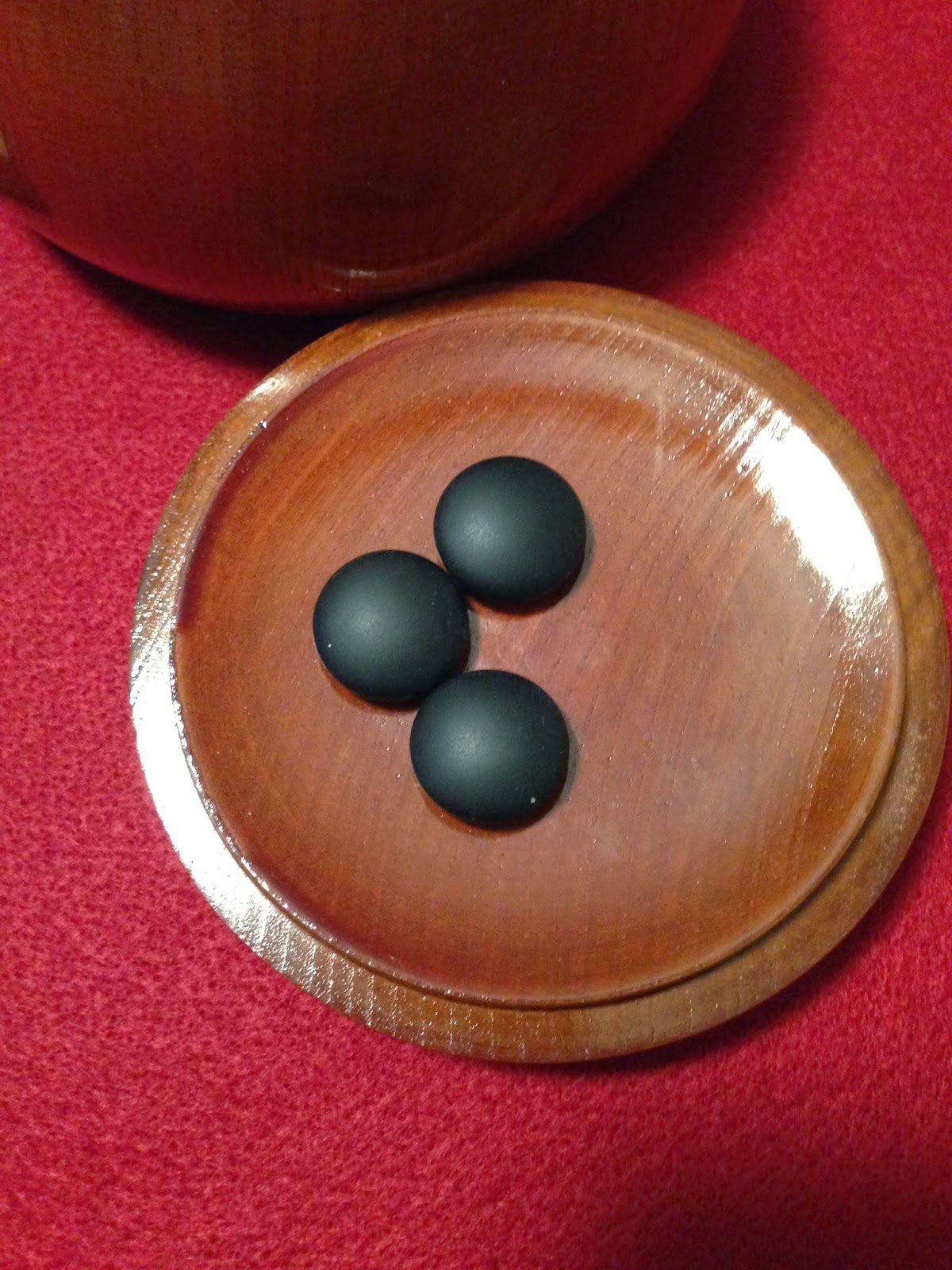So in honor of this first milestone, I wish to tell you about my favorite game ever:
Go. That's the name of the game. I don't want you to go anywhere. I want you to stay here and keep reading.
It is an abstract strategy game at it's finest. Few rules, endless variability, and looks great on a coffee table.
I've been playing Go for almost 8 years now, long before I got really into designer boardgames as a hobby. It is the only game I have rated a solid 10/10 on my boardgamegeek profile. Every other great game can only get at best a 9.5, because that is a rule I set for myself. Go is my favorite and that will never change. It is so great, I made sure it was the inaugural game on my game table.
But enough about me. You come here to hear about the games. Or maybe you come here for me. That would be quite flattering.
Go requires only a few components: A board and some stones.
The board consists of a 19x19 grid of lines. That's it.
Here's mine:
 |
| My precious. |
Boards come in a variety of woods and thicknesses. Thicker boards and nicer woods cost more. The one I have is a table board, but you can get ones with feet on them that are meant for placing on the floor. The fanciest boards are floor boards made from 700 year old Kaya trees grown in a particular region of Japan and are like 8 inches thick or something. They can run several hundred thousand dollars. *Sigh*...I can dream.
You also needs stones. Here are my Go stones (not to be confused with my gall stones).
 |
| A bowl of stones. |
These stones are made out of Yunzi. Few know what they are actually made of; it's a secret Chinese recipe. Yunzi stones are relatively inexpensive but still look and feel very nice. And the black ones are known for the strange green glow when held up to the light.
Probably the most well known/ fancy stones are shell and slate (the white ones are from shells, and the black from slate). The shells are from polished shells of a particular Japanese clam, and they have just lovely lovely patterns on them. They are also expensive. *Sigh*...I can dream.
The game starts with 2 players, each with a set of stones, and an empty board.
 |
| My blank canvas. |
But when you capture an opponent's stone, you get to clink it into the lid of your stone bowl for safe keeping.
 |
| My captures |
Throughout the game, you make all sorts of pretty shapes. Some of them are common enough to have names. Like this one:
 |
| Bamboo joints!! |
Ahem...excuse me.
Once both players decide there is nothing useful left to do and pass, the game ends. You then count the spaces that you have enclosed by your stones plus the number of stones you have captured to get a final score. Since black went first in the game, a slight advantage, white is award an extra few points to compensate called komi. There are several different sets of scoring rules, but I usually play by Japanese scoring rules which award a 6.5 point komi to white. The 0.5 point ensures that there are no ties. Good games can be won by only that half a point.
This is how a game with my brother turned out. I played white, he played black. It was not a good game for me.
 |
| This is a disaster for white. |
Anyway, I like Go a lot. It has simple rules, but is actually a very complicated, deep game. If you want to learn a lot, I would suggest checking out Sensei's Library. It has everything from beginner's tips to advanced strategies and position analysis. It's great.
You can also find several Go servers that let you play with people online. KGS is nice for live games, and is especially accepting of beginning players. Dragon Go Server (DGS) is my favorite, and is a faster modern equivalent of playing by mail. That is, you have a time limit of like 30 days or something and the players don't have to be online at the same time, it's all done turn by turn at your leisure. I like this style actually. And I also like dragons.
So I would of course recommend that you try Go. All the cool people are playing it.







